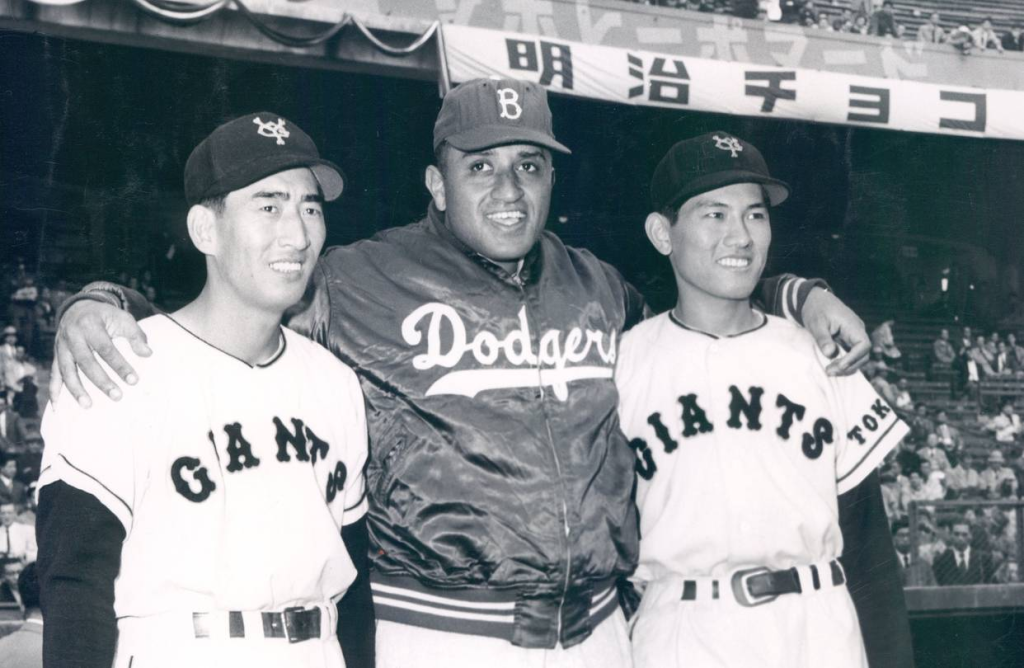Everyone says that baseball is America’s pastime, but numbers do not lie, and the top sport has been football by a large margin. With a season of over 162 games, hundreds of players come in and out of the sport, and for the regular fan, it is not easy to stay on top of who is running the sport. That is until a true unicorn comes and completely shifts the paradigm of the sport. Players like Michael Jordan in the NBA, Tiger Woods in golf, and now Shohei Ohtani in baseball have evolved the sport.
The American Influence on Japanese Sports
After WWII, the United States’ influence on Japan was profound, especially with the help of the devasted cities. American pastimes like baseball were engraved in Japanese society as part of their own. This evolved into having their own professional league, which started in 1950, and it was called Nippon Professional Baseball (NPB). (It is called Puro Yakyū (プロ野球), which simply is a translation of professional baseball.)
NPB and MLB Connection
The MLB did not significantly influence Japanese players because they are no free agents – they are contractually bound to play for their NPB teams like MLB players are. So many NPBs did not want to let go of their talent. The first Nippon to make the transition was the left-hander pitcher Masanori Murakami, who was sent from the Nankai Hawks to the San Francisco Giants in 1964. And even though his stint was relatively short in the mayors, this will leave a profound precedent for the league.
Ichiro’s Influence in the game
Ichiro Suzuki was born on October 22, 1973, in Nishikasugai District, Aichi Prefecture, and spent his childhood in the small town of Toyoyama near Nagoya. When he was just seven years old, he joined his first baseball team and turned to his father, Nobuyuki Suzuki (鈴木宣之), for help in improving his skills.
In 1992, Suzuki debuted in Japan’s Pacific League with the Orix BlueWave at 18. However, he spent most of his first two seasons in the minor leagues, where he tallied 156 hits and posted a .368 batting average. His then-manager, Shōzō Doi, was reluctant to accept Suzuki’s distinctive batting style—dubbed the “pendulum” swing (振り子打法, Furiko Dahō)—which featured a forward leg movement that shifted his weight during the swing, challenging conventional baseball technique.
Transfer to the MLB
Because of a formal agreement between Nippon Professional Baseball and Major League Baseball, Ichiro Suzuki was not permitted to join an MLB team until 2001. His transition to the U.S. generated significant interest, as he was one of the first Japanese position players to leap into Major League Baseball. Just as several Japanese teams had overlooked the then-18-year-old Suzuki in 1992 for being undersized, many in the United States also doubted his physical durability—questioning whether he could handle Major League pitching and the demands of a 162-game season.
During his 19-year career Ichiro played with the Seattle Mariners, New York Yankees, and Miami Marlins most of the time in the outfield and received these accolades:
- 10× All-Star (2001–2010)
- AL MVP (2001)
- AL Rookie of the Year (2001)
- 10× Gold Glove Award (2001–2010)
- 3× Silver Slugger Award (2001, 2007, 2009)
- 2× AL batting champion (2001, 2004)
- AL stolen base leader (2001)
- MLB record 262 hits, single season
Ichiro’s success in the major leagues opened the flood gates for Japanese players to make that jump to the US. Important MLB prospects started appearing in the team’s radar. Players like the outfielder Hideki Matsui and the starting pitcher Masahiro Tanaka, both from the New York Yankees, became household names with a large fan base.
A Unicorn Appears in the Land of the Rising Sun
Pitchers are known for many aspects of their game including controlling the pace of play, setting up the defenses but being dominant hitters is something that does not go hand in hand. So much so that now both leagues have a designated hitter in the lineup that that is up during the pitchers’ turn at bat. Ever since the times of the “great bambino” Babe Ruth, pitchers have not been seen as dominant hitters.
A unicorn called Shohei Ohtani was born to Kayoko and Toru Ohtani in Mizusawa Iwate, Japan, on July 5, 1994. His mother Kayoko was a national-level badminton player in high school and his father Tōru worked at a local automobile manufacturing plant and was an amateur baseball player who played in the Japanese Industrial League. He began playing baseball in his second year of elementary school, and as a seventh-grader, Ohtani recorded all but one of 18 outs in a six-inning regional championship game. Ohtani’s high school baseball coach, Hiroshi Sasaki, said that he was a fast swimmer who could have competed in the Olympics.
Baseball Career Starts
Ohtani expressed a desire to move directly to the major leagues after high school and received interest from numerous teams including the Texas Rangers, Boston Red Sox, New York Yankees, and Los Angeles Dodgers. On October 21, 2012, he announced that he would pursue a career in Major League Baseball (MLB) rather than turn professional in Japan. The Hokkaido Nippon-Ham Fighters decided to draft him in the 2012 NPB Draft, nevertheless.
During his time in Nippon Professional Baseball (NPB), Ohtani’s exceptional performances garnered him numerous accolades. His remarkable achievements include multiple All-Star selections, winning the prestigious Rookie of the Year award, and earning the title of the league’s Most Valuable Player (MVP) in 2016.
Signing with the Angeles
On December 9, 2017, Ohtani signed a deal with the Los Angeles Angels. On December 13, it was revealed that he had been diagnosed with a first-degree UCL sprain in his right elbow and received a platelet-rich plasma injection to treat the injury. This injury would be a critical part of his career because it would be followed up with 2 Tommy John surgeries, the last one being in 2023.
During his time with the Angels Ohtani won rookie of the year of the American league and league MVP in 2021 but did not have any success teamwise even though he had as a teammate what many considered the best player of the league now in Mike Trout. In 2023 Ohtani won his second MVP, becoming the first player in the league’s history to win both by unanimous decision.
La La Land
After months of speculation from the baseball world about which team the Nippon superstar would continue his career with, on December 11, 2023, Ohtani signed a 10-year, $700 million contract with the Los Angeles Dodgers, the largest contract in professional sports history at the time. His wages were structured so that $68 million per season was deferred until after the deal’s conclusion, to be paid out from 2034 to 2043.
Because of his elbow injury and consequent surgery in September 2023, Ohtani and the Dodgers announced that he would not pitch in the 2024 season. He became the first and only player in MLB history to hit 50 home runs and steal 50 bases in a single season. His Dodgers reached the World Series, where they ultimately defeated the New York Yankees in five games, giving Ohtani his first career World Series championship.
In June 2025, Ohtani made his official debut with the Dodgers as an opening pitcher, which was celebrated by all baseball fans.
Baseball is no longer only America’s Pastime
Baseball was once seen as America’s pastime, bolstered by a steady stream of Latino talent from the Dominican Republic, Puerto Rico, and Cuba. Today, it has evolved into a truly global phenomenon. Shohei Ohtani stands at the forefront as one of the most recognized faces in the league, representing a sport now played and followed across every continent. This global wave is built on the shoulders of pioneers like Ichiro Suzuki, who paved the way for international stars to thrive in Major League Baseball.
What was once a sport rooted in U.S. tradition has become a bridge between cultures, uniting fans from Tokyo to Caracas and Seoul to Santo Domingo. MLB teams now scout talent worldwide, and fanbases stretch far beyond the ballparks of New York or Los Angeles. As the league expands its international reach, the sport redefines itself as a legacy of the past and as a dynamic, borderless future where diversity drives its continued evolution.




